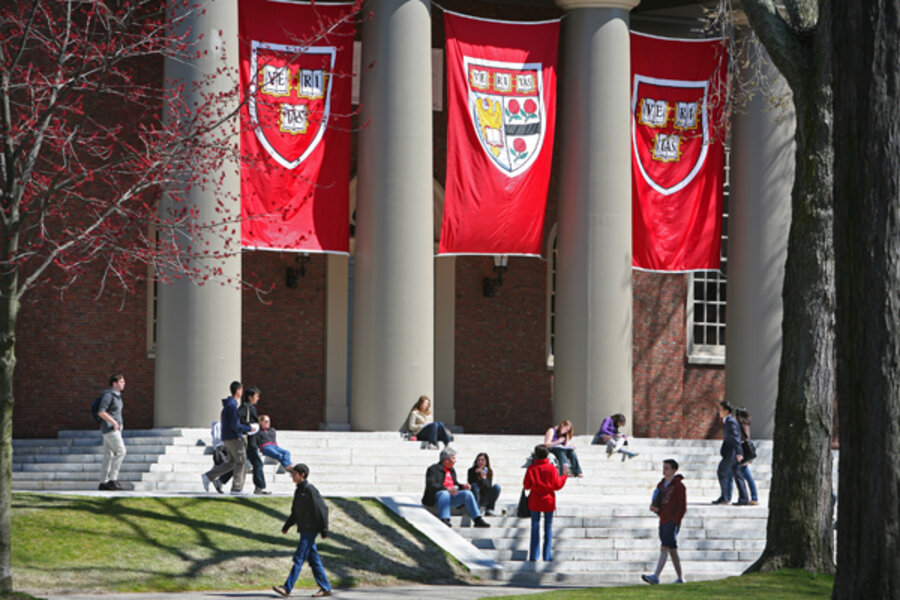The world's Top 200 universities: Harvard no longer No. 1?
Loading...
| Boston
Harvard University is no longer the world's No. 1 university, according to 2010 university rankings released Wednesday.
For the first time since UK-based QS began publishing its World University Rankings in 2004, Harvard was beat out for the top spot by another Cambridge school — University of Cambridge in the United Kingdom. Harvard ranked second, while yet another Cambridge school, Massachusetts Institute of Technology, took the No. 5 spot (jumping from No. 9 in 2009).
QS describes itself as a career and education networking organization and it releases these rankings every year.
Universities in the US and UK filled the top 10 spots, the same as previous years, although the numbers shuffled a bit. The US remains the academic powerhouse, with 53 universities on the list, which ranks the top 200 universities. The UK does disproportionately well for its population size, with 30 universities in the top 200.
RELATED: The world's Top 10 universities
But Asian universities are holding the ground they've gained on Western schools. The University of Hong Kong leads the region at No. 23, and four other Hong Kong schools populate the list. The top 200 also include six Chinese, 10 Japanese, five South Korean (up from four in 2009) and two Singapore universities.
Because the QS survey and U.S. News & World Report – which produces one of the most popular rankings of US universities – use different criteria, the rankings of American schools don't always match. For example, Princeton University, considered the No. 2 US school by U.S. News, is considered the sixth by QS.
The QS rankings are based on a survey of universities' reputations among academics (weighted at 40 percent) and employers (10 percent), as well as student-faculty ratios (20 percent), the number of international staff and students (5 percent each), and citations of faculty members (20 percents).
A member of the QS staff, Danny Byrne, ascribes Harvard's drop and Cambridge's ascent to the global recession, noting that Harvard lost ground in student-faculty ratios (dropping from No. 28 to No. 40) and the hiring of international staff (dropping 34 spots, according to the writer), most likely because it froze some of its academic hiring. The school continued to perform well in other criteria.
Several other top American universities slipped because of international faculty — California Institute of Technology dropped from the No. 1 spot in international faculty to No. 22. However, the rankings indicate that many American schools climbed in the rankings when evaluated only on student-faculty ratios.
Several schools jumped or dropped in the rankings by 20 spots or more, and at least initially, it was unclear how such a precipitous move was possible.
The QS survey is one of many university rankings released every year. U.S. News & World Report cites the QS survey.





